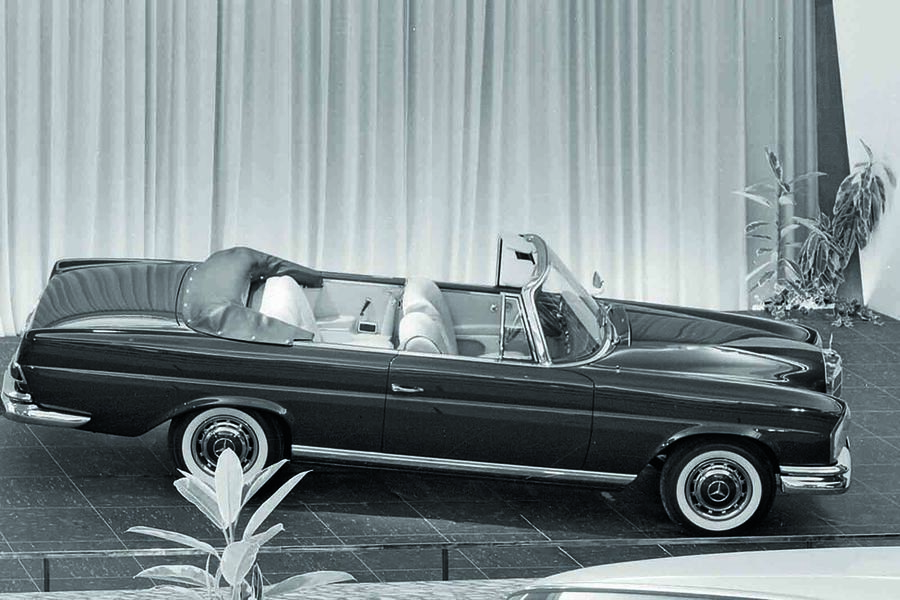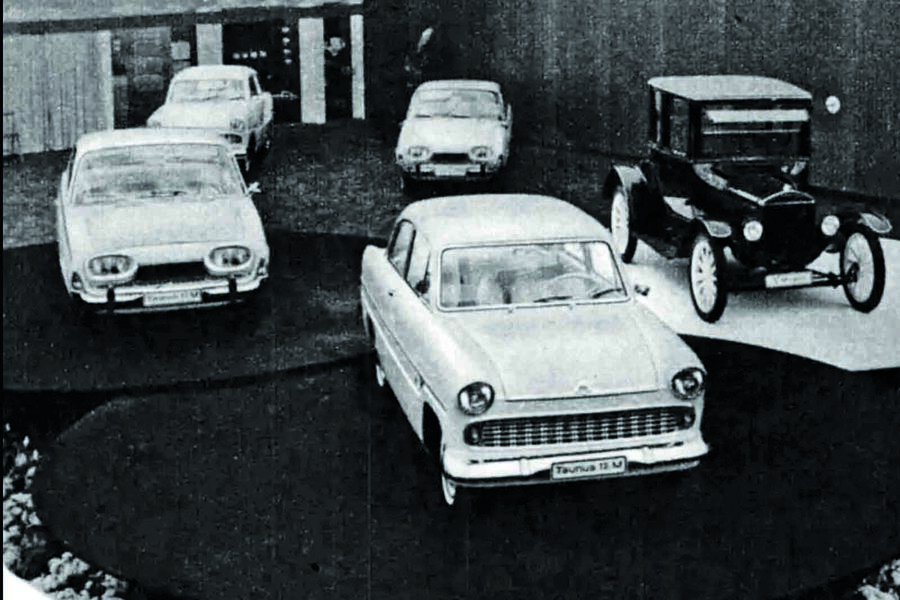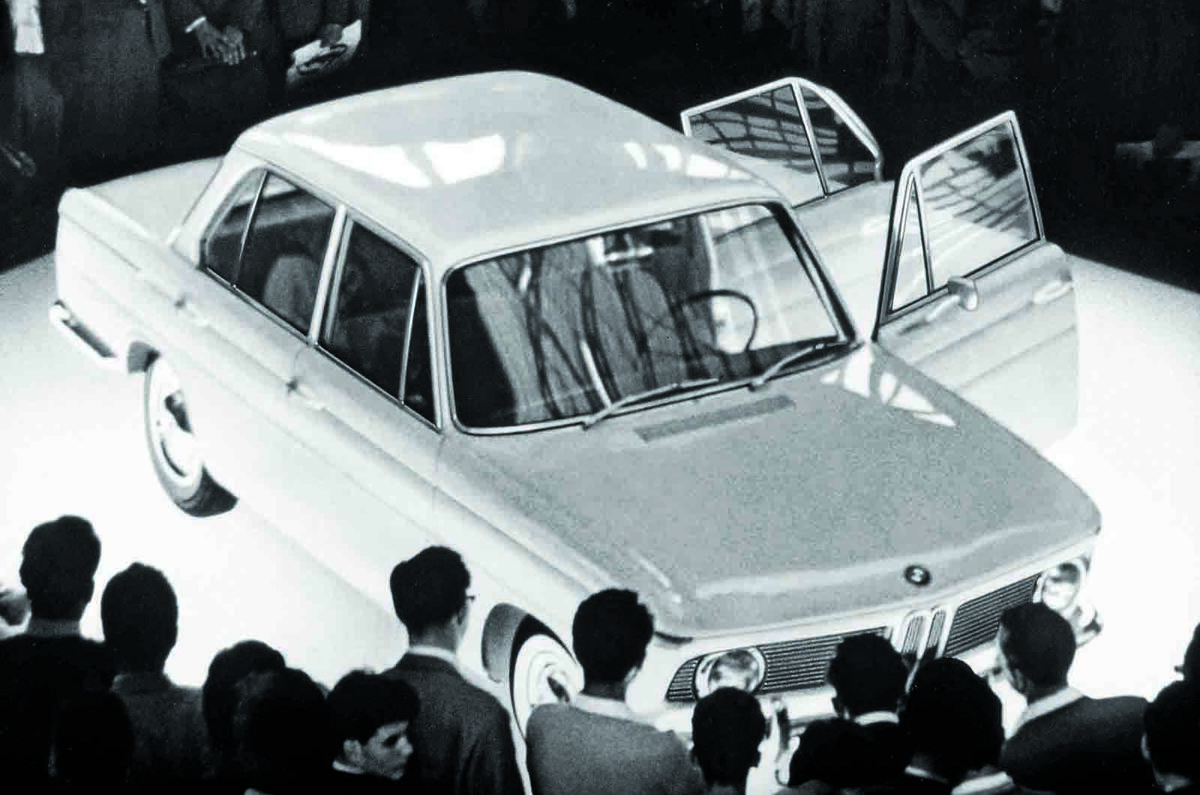BMW has recently revealed its new iX3 SUV at the Munich motor show, as the first member of its 'Neue Klasse' of EVs. These cars are critical for the company's future just as the original 'Neue Klasse' of mid-sized saloons was back in the early 1960s, when BMW found itself under serious financial pressure.
It was the 1961 Frankfurt show where the public first saw a Neue Klasse saloon, giving a "tremendous reception" to the "very elegant and well-appointed", Michelotti designed 1500. "If the estimated price of £760 [£14,650 in today's money] and dry weight of 1005kg can be maintained, its success seems assured," reported Autocar.
Also new on the BMW stand was the 3200 CS luxury coupé, designed by Bertone and powered by a 160bhp 3.2-litre V8, costing £2650 serving as a striking contrast to Munich's popular miniature 600, at £622.
Yet it was Volkswagen that was the centre of attention, with its own new 1500. Also known as the Type 3, this was the first all-new car from Wolfsburg since the seminal Type 1 'Beetle', conceived way back in the 1930s. "The VW 1500 is undoubtedly very cleverly conceived, and the standard of finish is very high," we said but we did fear that the poor refinement of an air-cooled engine couldn't cut it in the 1.5-litre class, especially when at £567 it cost a bit more than its Ford and Opel rivals.
Enjoy full access to the complete Autocar archive at the magazineshop.com
The estate version "seemed a much better proposition" than the notchback. Sadly the smart-looking cabriolet version never would come to fruition, but then Volkswagen already offered such a product in the "well-styled" Karmann Ghia, the new 1500 version of which (easily distinguished by two extra front lights) was also on its stand.
Mercedes-Benz surprised show attendees with a new cabriolet of its own, a rag-top version of its recently launched six-cylinder 220 SE coupé (W111 generation). Of even greater interest, however, were the new 190 (W110) and 300 SE (W112) saloons, think E-Class and S-Class. "The 190 is very good value for money at £890 and is noticeably more refined than its predecessor," we said. "Although the 300 SE is expensive, at £2150, its specification has a big sales appeal."

Auto Union (the forerunner of today's Audi) had no new model to show but created a lot of interest in a new Bosch-developed oiling system, which "eliminates the annoyance of pre-mixing it with the fuel" and let the ratio be cut from 1:40 to 1:100 and to be standard on most UK cars.
Ford of Cologne (then a distinct car maker) had "enjoyed a very big success" in its first year selling the Taunus 17M P3 family saloon, and at Frankfurt it introduced a higher-performance version, the TS, with an extra 60cc and separate front seats.
Its Rüsselsheim rival Opel countered with a coupé version of its own 1.7-litre offering, the year-old Rekord P2, "but it is not a very attractive car", we stated, "the lines of the new roof conflicting with those of the main shell, which is the same as that of the four-door".
The smaller German companies all had fresh wares to exhibit, too. NSU unleashed a major update on its Prinz miniature saloon: "The new body has enabled passenger accommodation to be increased significantly, and a great deal of work has gone into reducing the noise level of the rear-mounted, twin-cylinder, air-cooled engine."
Porsche made several detail changes to its Beetle-based 356B sports car most prominently the standardisation of the race-inspired Carrera version's twin intake grilles and added a new Carrera 2 model with a bigger, 2.0-litre engine.
And Glas sought to offset falling sales of its ultra-cheap, two-stroke Goggomobil with a new 1.0-litre four-cylinder coupé, the S-1004.

French, Italian and British car makers were naturally also looking to capitalise on the growth of West Germany's economy so unlikely and so rapid that it would become known as the 'economic miracle'. The most impressive Brit was the sporty new BMC Mini-Cooper, two of which were raced to Frankfurt at an average of 70mph from Aachen and Hamburg by a team of four race and rally drivers (one of whom was future F1 champion Graham Hill).
The one notable absentee was Germany's own Borgward, which had produced almost twice as many cars as BMW in 1960 but had recently ceased operations amid a controversial bankruptcy case.
The Bremen company's beautiful Isabella had been one of the most popular upmarket models and it was in this vacuum that the Neue Klasse would bloom, setting BMW onto the path to not just survival but eventually vast expansion.
"In terms of output, the West German motor industry is now the largest in Europe and heading world statistics in the number of exports," concluded Autocar. "Gone are the times of the happy-go-lucky small manufacturers, and the new slogan appears to be concentration."




Add your comment